The Life Of A Legend: A Look At Superstar Diego Armando Maradona
We’re not exaggerating when we say that Diego Maradona was one of the greatest soccer players in the history of the sport. He became a historic figure in Argentina after winning the World Cup in Mexico in 1986, as well as coming in second in the next World Cup four years later.
After his run as a soccer player, he became a coach for numerous teams, including the national Argentine soccer team in 2010. Loved and hated by many, Maradona was also a very controversial person.
Outside of the soccer field, he had plenty of experiences showing off his bright and his dark side. Some people remember him as a role model for underprivileged kids who want to have a better life through soccer, and there are those who remember him for his addictions.
In this article, we’ll tell the story of the Pibe de Oro (the Golden Boy).
Diego’s Origins
Diego Armando Maradona was born in 1960 in a working-class family living outside of Buenos Aires. He had four older sisters and was the firstborn son of his family. Since he was a kid, Diego showed talent in sports, especially soccer.
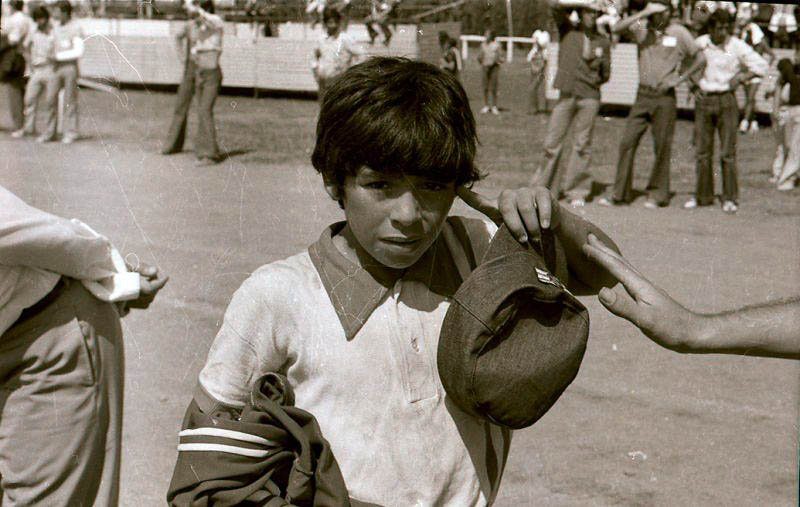
Even though his family was from Argentina, his ancestors were from Croatia and Spain, and he also had ancestors from the Guaraní people. Diego went through some hardships at home — living in a family with eight children, Diego’s parents didn’t have a lot of money.
When He Met Soccer
From an early age, Diego showed a knack for playing sports; he became increasingly interested in soccer. At the start of his career, Maradona practiced and played at a soccer field nearby his house; it was known as “Las Siete Canchitas” or “The Seven Soccer Fields.”
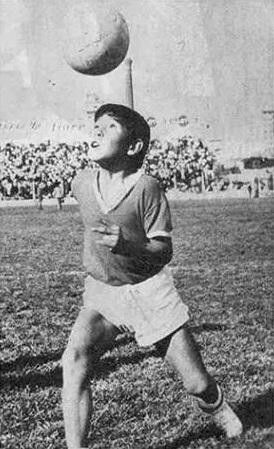
Little by little, he started developing a natural talent. When he was only 9 years old, he participated in the tryouts for the Argentinos Juniors’ juvenile team — and made it! That was just the beginning of an extensive career that would bring him a lot of joy and sadness.
The First Signs Of Fame
From the very beginning, he started to get attention from the Argentinian media. In 1971, when he was only 11 years old, the newspaper El Clarín published a piece about Diego Maradona in which they already characterized him as a rising star.
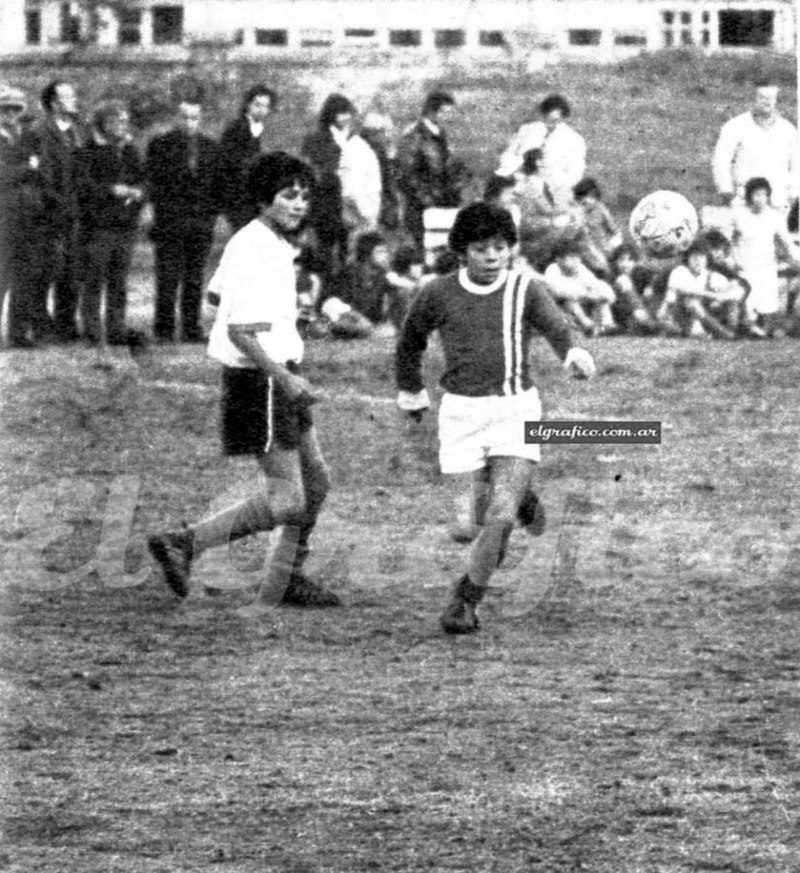
It was clear that he had a great talent for the sport and a brilliant future ahead of him. As a matter of fact, not long after the El Clarín piece came out, he was invited on TV for an interview. That was Diego’s first taste of fame.
A Great Debut
His big moment came in 1976 when he had the opportunity to make his debut in Argentine professional soccer. At 16 years old, he became one of the youngest players in the Argentine First Division — Argentinos Juniors was the team that had the privilege of having this incredible player.
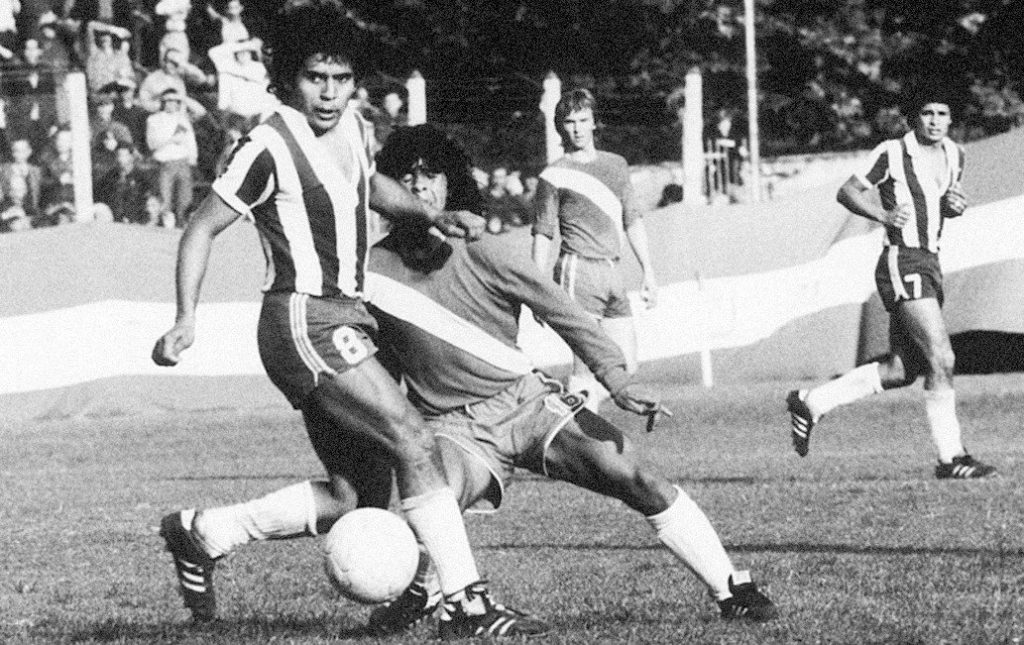
His first match was against the Talleres de Córdoba. Interestingly, one can say that his debut was disappointing, considering his team lost the game. Diego only made it onto the field during the second half of the match, and he left the field with a bitter taste in his mouth.
Argentina ’78
Diego Maradona had already played two seasons with Argentinos Juniors in the first division. However, he was still way too young to get drafted to play in the 1978 World Cup, which took place in his backyard — Argentina. To this day, people still question if that was the right decision.
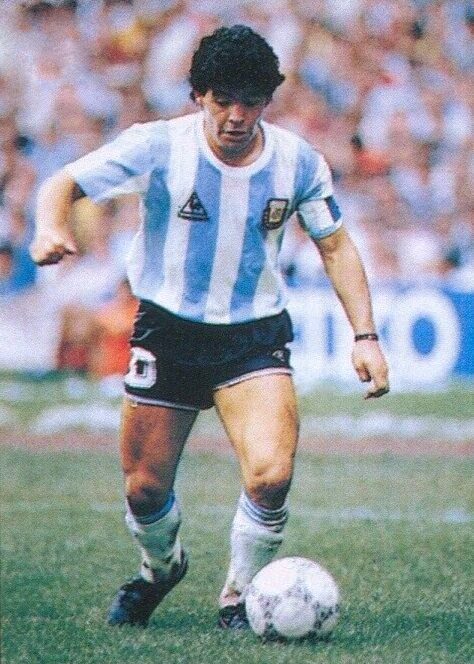
Argentina still won the competition, with the help of talented players such as Mario Kempes. That was the first time the country won the World Cup, and it was just the beginning of Argentine soccer’s Golden Era. Maradona had to wait another four years to make his debut in the competition.
The Highest Scorer In The Argentine League
Even though he didn’t get to play in the ’78 World Cup, Maradona continued making a name for himself in the Argentine first division. In the same year, Maradona became the highest scorer in the Metropolitan Tournament, and he repeated that feat in the following two years.
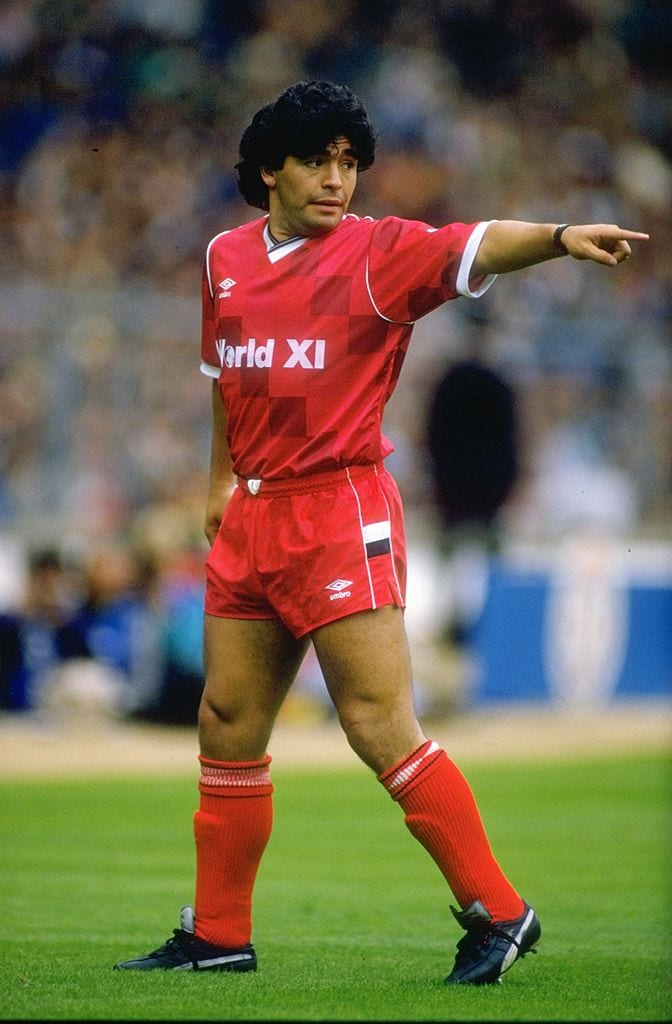
In addition to those achievements, he also became the highest scorer during the National Tournament in 1980. El Pelusa, or The Fuzz, as he was also known, scored five goals. At the time, he was only 20 years old and became the best youth player in Argentina.
Getting Ready For The World Cup
After not getting drafted to play in the ’78 World Cup, Maradona started getting ready for the U-20 World Cup, which was to take place the following year. During this opportunity, he showed his worth when he scored the first of many goals.
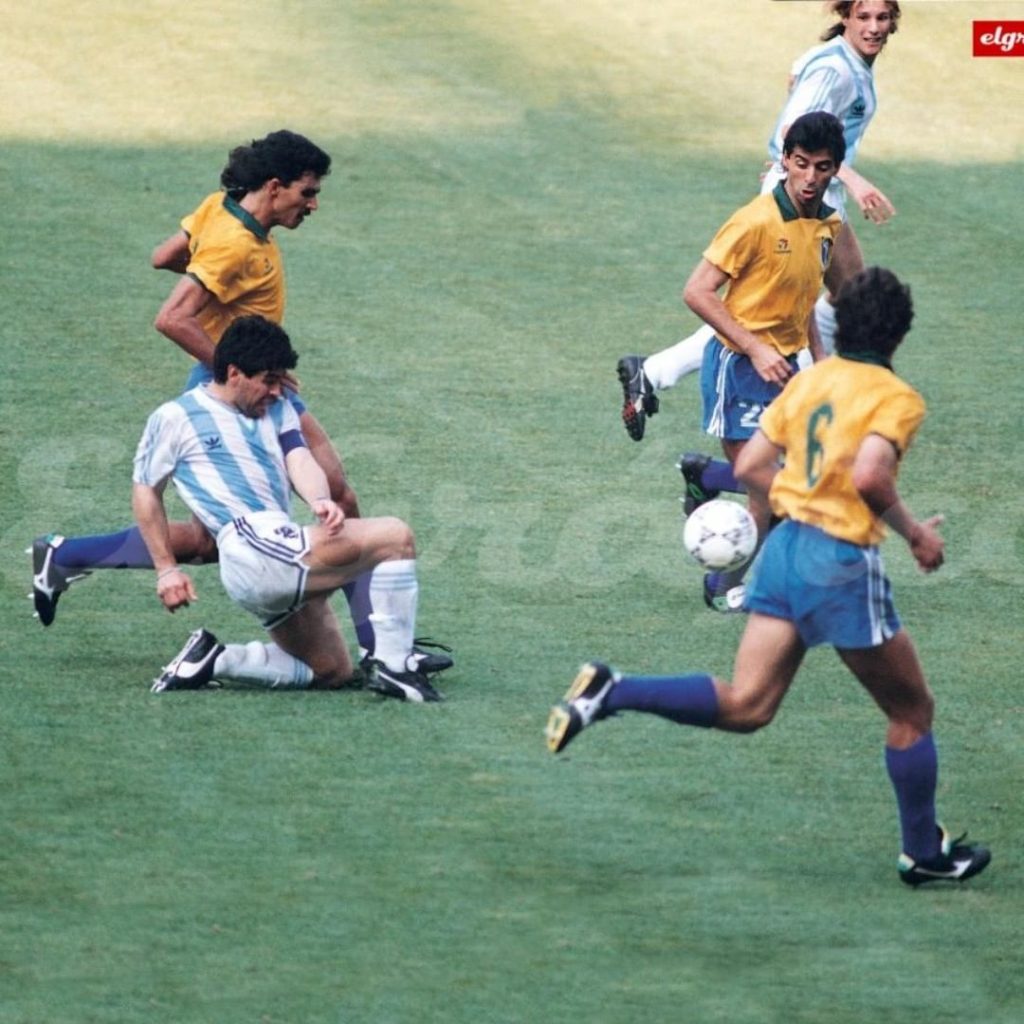
And if that wasn’t enough, Argentina ended up bringing the trophy home. After showing off his skills on the field, Diego became a top contender for a spot on the National Team. In fact, this competition paved the way for his debut in the ’82 World Cup.
Playing For Boca Juniors
By 1981, Diego was already a sensation in the Argentine league. Since his debut in the first division, he hadn’t left his starting team. However, it was obvious that his team was too small for his talent and he needed to search for new opportunities.
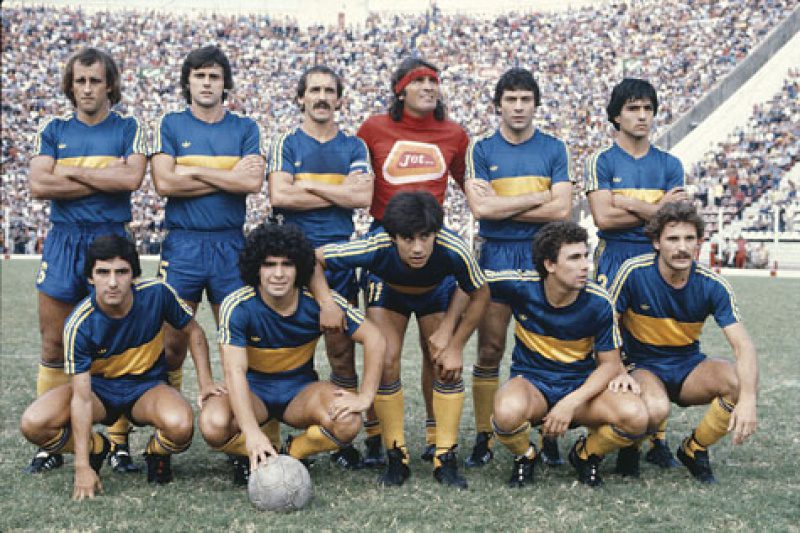
Most teams made offers to get Maradona to play for them, even the popular River Plate. However, Diego already knew that he wanted to wear Boca Juniors’ colors, even though the blue-and-gold team was not exactly in its best shape, financially speaking.
Debuting In The World Cup
After four long years, Diego Armando Maradona had the opportunity to be part of the Argentine National Team that played the ’82 World Cup in Spain. Argentina was the defending champion and one of the favorite teams to take the trophy home.
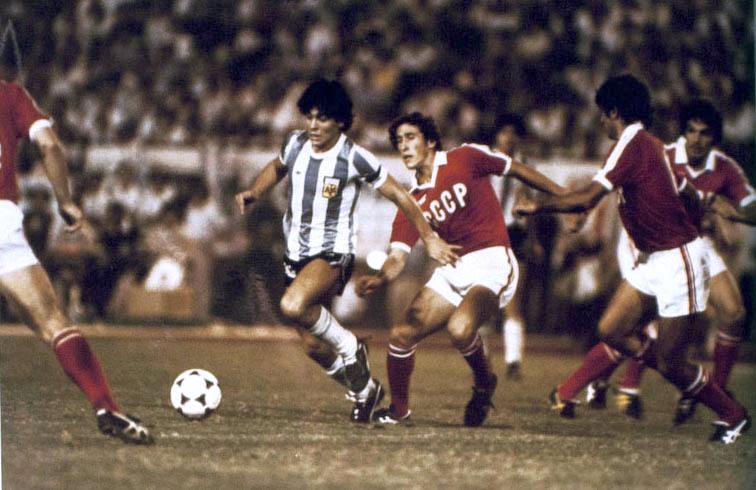
Though the Argentine team was outstanding, all that talent was not enough, given that the team didn’t even make it to the semifinals. In that particular year, Italy managed to win their third World Cup title after a 50-year dry spell.
Diego Moves To Barcelona
In spite of the bitter experience in the ’82 World Cup, Diego had his first opportunity to play in European fields. He moved to Spain so he could play for FC Barcelona; his debut with the Catalan team was against Valencia.
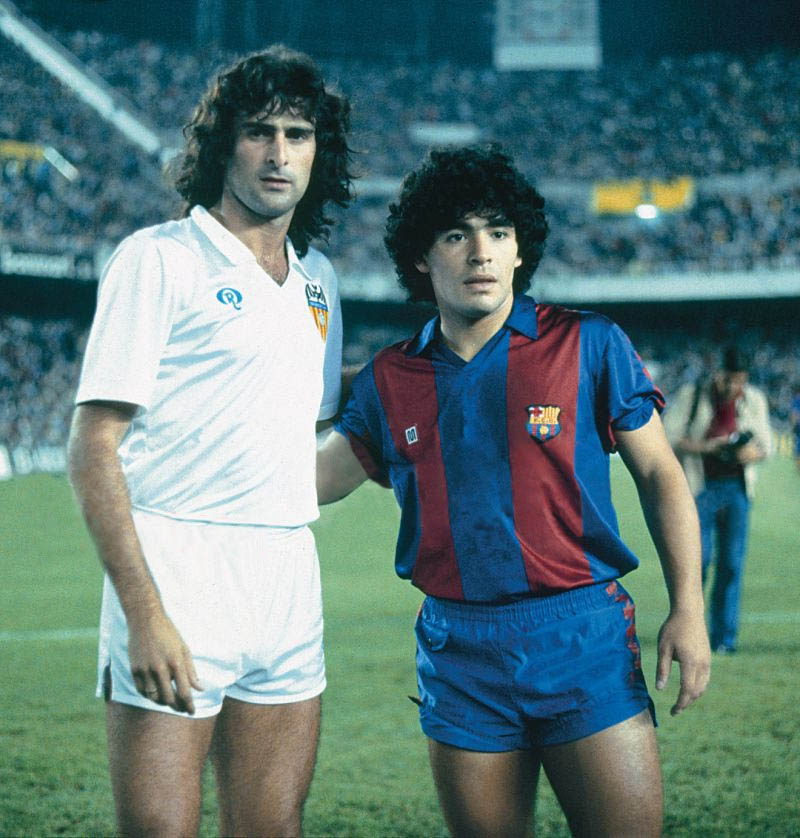
Unfortunately, the first game was not exactly what he expected. And that wasn’t the worst part. After playing only 13 games with the Catalan team, Maradona had to spend three months away from the soccer field after being diagnosed with hepatitis.
The Controversies Begin
By the time he got to Spain, Maradona was already considered one of the best players in the world. Even though everyone was delighted by his performance with FC Barcelona, a dark phase in Diego’s life was just getting started and would later have consequences.
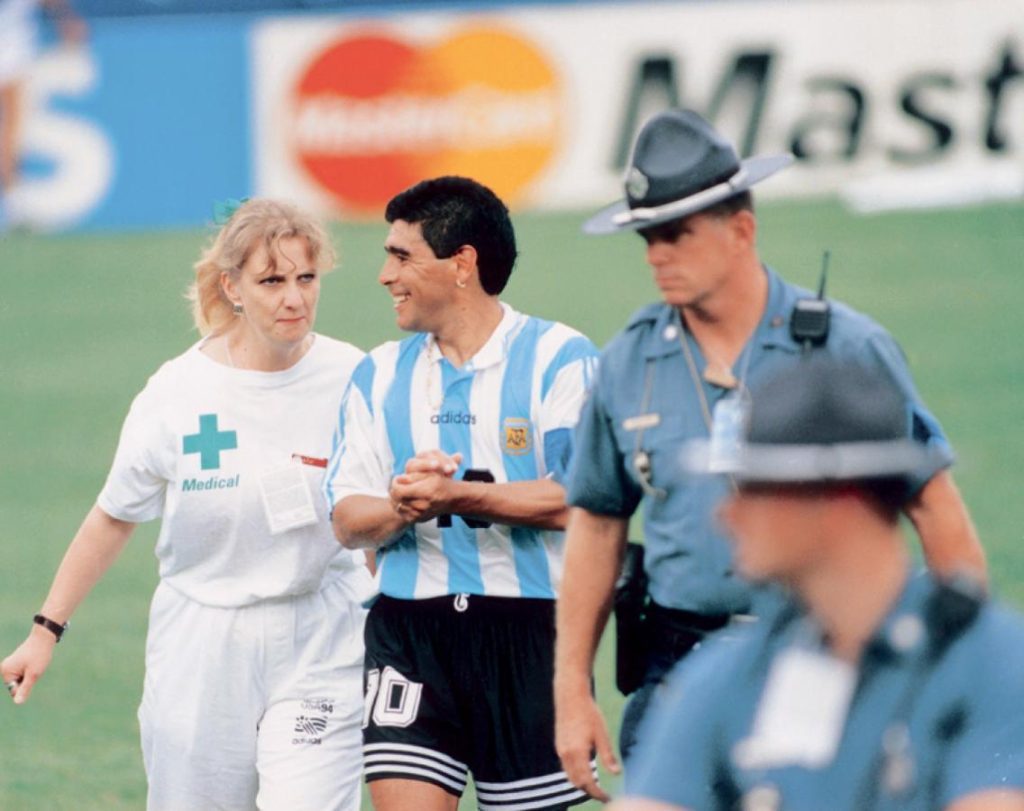
Behind the mask of happiness and success, the Argentine star began to abuse the nightlife in Barcelona. It was around this time that he started using illegal substances and eventually became an addict. While it was not apparent at first, his addiction later started damaging his life and career.
The Positive Side
Before he moved to Europe, Diego had the opportunity to meet the woman who’d later become his wife and mother of his children. Claudía Villafañe supported the athlete during the hardest moments of his life — on and off the field.
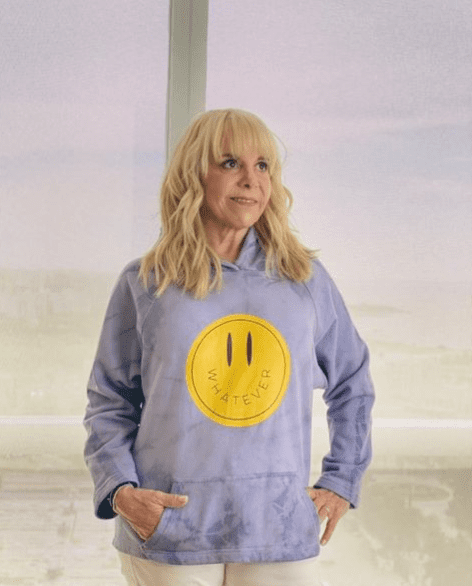
Claudia moved to Spain with Diego, where she kept him motivated in both his professional and personal lives. Out of all his past (and future) romantic connections, Diego’s relationship with Claudía was the longest, and it was also the most stable.
His First Love
Diego and Claudía got married in 1984 and quickly became one of the most beloved celebrity couples in Argentina. To outsiders, their relationship was like a dream come true. However, they had lots of issues that ultimately led to their divorce years later.
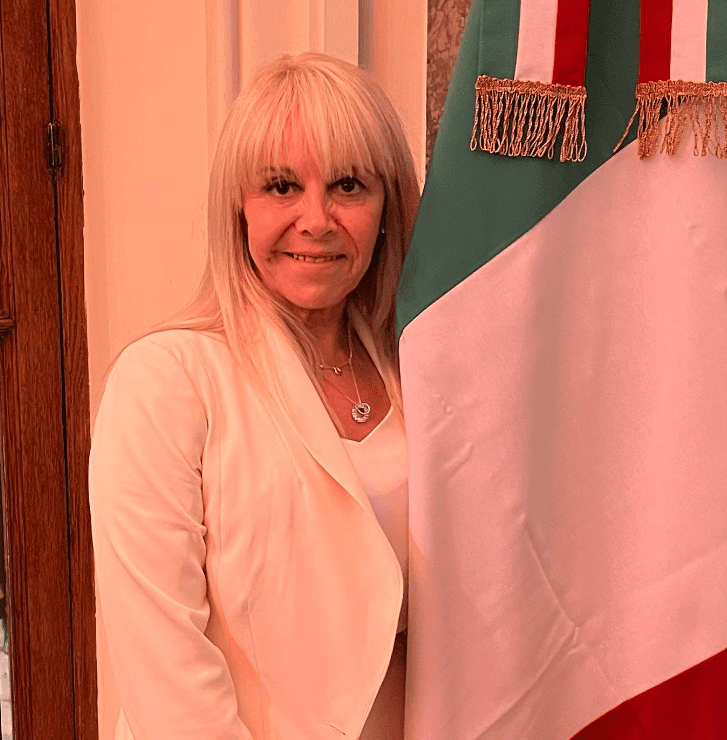
During the three months that Diego had to stay away from the field due to his hepatitis, Claudia remained by his side. However, his issues and substance abuse eventually started affecting their relationship. In 2004, the pair’s divorce was finalized.
Argentina’s Captain
During the ’80s, Diego was having the time of his life. As such, it was not a surprise when he became the captain of the Argentine National Team, whose coach at the time was Carlos Salvador Billardo, for the first time when he was only 24 years old.
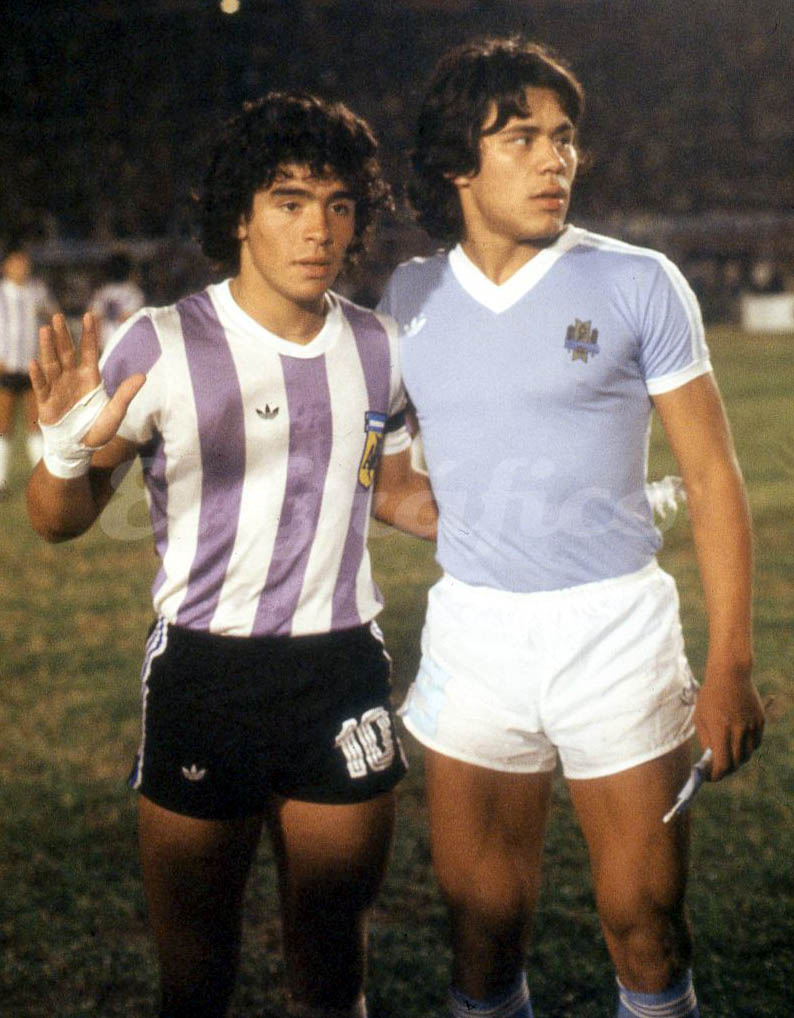
Diego was a controversial figure and becoming the captain had its burdens. He had conflicts with different coaches and physicians that worked for his teams. However, one cannot deny the fact that, as a player, he was admired by his teammates.
Mexico, 1986
The 1986 World Cup, which took place in Mexico, was Diego Maradona’s second time defending his country’s national team. When he got to the Aztec lands, all eyes were on him. On top of being the captain of the Argentine team, he also had the distinction of being one of the best players at the time.
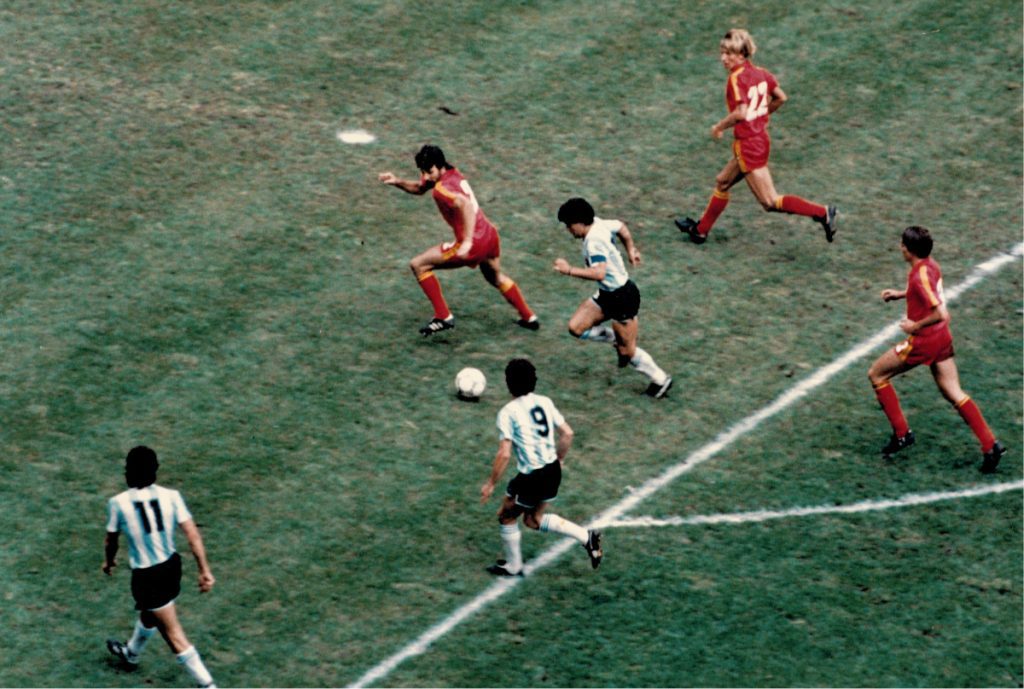
Maradona lived up to everyone’s expectations. Argentina was one of the favorite teams to take home the trophy. Wearing the number “10” jersey, the Pibe de Oro had one of the most celebrated performances in the history of modern soccer.
The Legendary Match Against England
During the group phases, Argentina had no major issues. However, when they got to the quarterfinals, the whole thing changed. That was the moment they’d have to play against the powerful English team. Add that to the long-lasting Argentina-England rivalry, and you’ll understand why people were so passionate about this match.
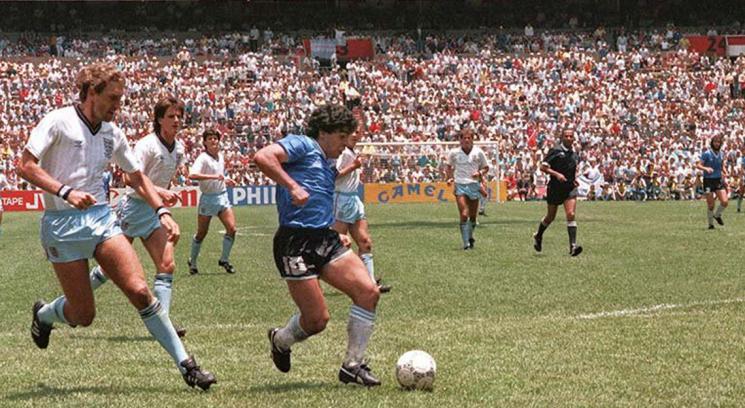
This match was easily the most awaited during the quarterfinals. What most people didn’t know was that it would make it to the history books. It was during this match that Diego Maradona became a legend in Argentina and the rest of the world.
God’s Hand
It was during the match against England that one of the most iconic goals in history took place. Shortly after the match had started, an English player sent the ball back to his team’s goal area. Both Maradona and the goalkeeper jumped after the ball.
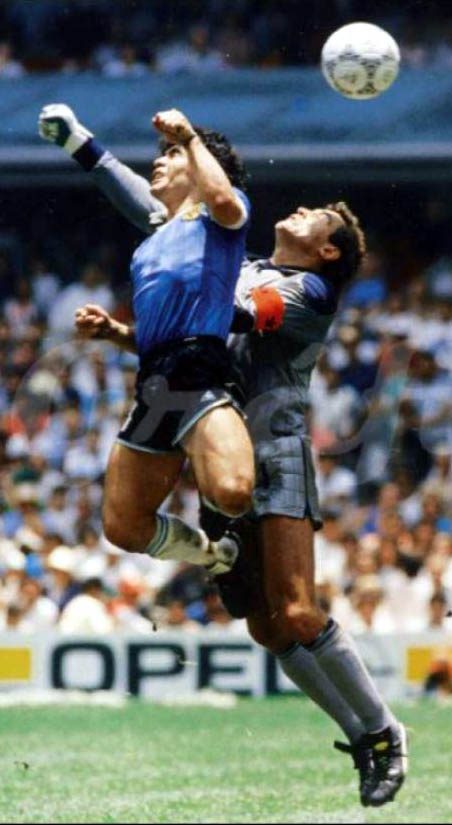
When everyone thought the goalkeeper would catch the ball, Maradona punched it with his hand and scored a goal. To everyone’s surprise, the referees said the goal was valid. During the second half, Diego ran across the field, dribbled six players, and scored a goal that was chosen as the prettiest goal of the tournament.
World Champions!
After the iconic match against England, most people expected Argentina to win the competition. During the semifinals, against Belgium, the team won by 2. Diego and his teammates made it to the finals even more powerful and motivated than when they started.
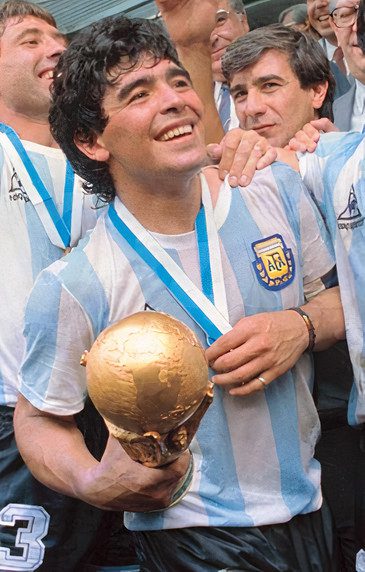
The 1986 World Cup Finals took place in a sold-out Estadio Azteca. This time, Argentina was up against West Germany. Even though the Germans were one of the strongest teams in the world, Argentina took the trophy home after winning 3-2.
Maradona Gets To Naples
After the World Cup, Diego decided to try his luck with a new team. The Argentine superstar received many proposals but eventually decided to join SSC Napoli in Italy. This was one of Maradona’s, and the team’s, most glorious periods.
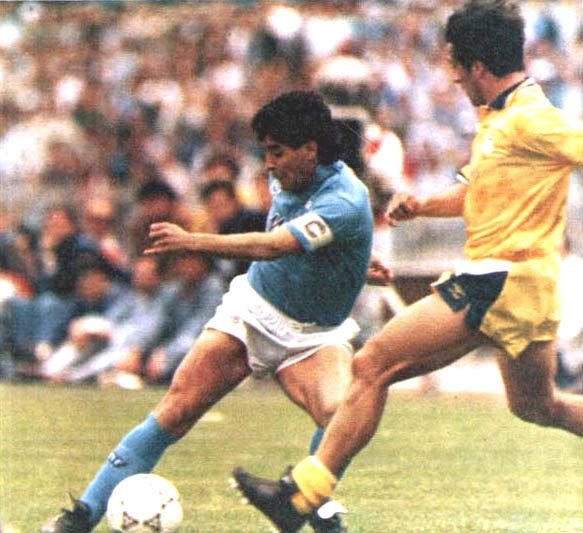
Among his top achievements during this phase were Napoli’s first trophy in the Italian Cup and two Series A titles. And if that wasn’t enough, the team also won the 1988-89 Champion’s League. Diego became one of the most valuable players in Europe.
The MVP
All these successes led to Maradona becoming an idol in Naples, whose inhabitants still remember the Argentine star today. During his time in Italy, Diego received million-dollar offers from teams in various leagues. But Maradona had a firm commitment with SSC Napoli and declined the offers.
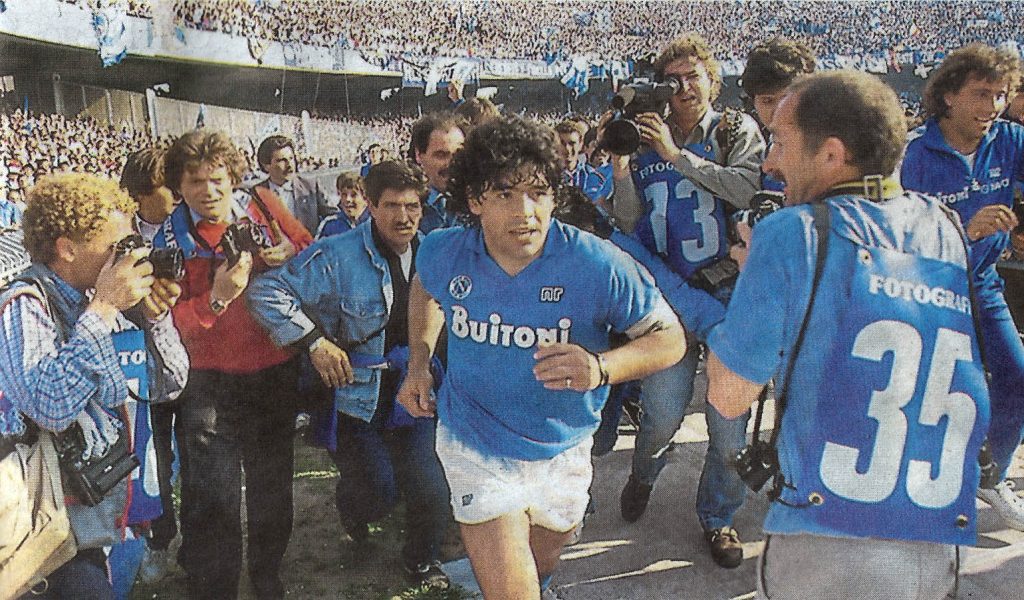
This was a golden period for him since people were beginning to say that he was the best player in the history of football. His abilities on the field were unique, and there were very few defenders who could stop Diego’s attacks.
Diego Becomes A Dad
In the best moment of his professional career, Diego publicly announced that his wife Claudia was pregnant. He was about to become a dad! With a successful career and a happy family, including one new member on the way, everything in Maradona’s life seemed perfect.
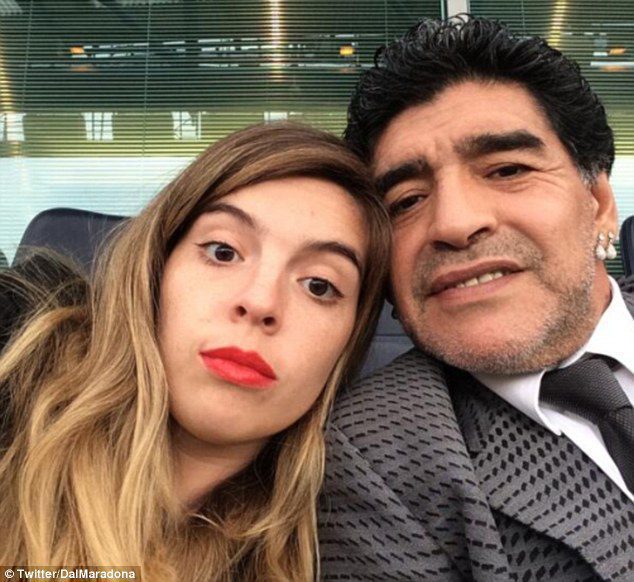
In 1987, Diego’s first daughter, Dalma Maradona, was born. Her name was in honor of Diego’s mother, Dalma Salvadora Franco. The baby girl was born in Naples and came to sweeten one of the happiest periods of her father’s life.
Diego’s Adventures
But behind this “happy wife guy” mask, Diego had had some adventures with local girls from Naples. One of them was Cristina Sinagra, a teenager who rose to fame in 1987 when it became known that she had had an affair with Maradona.
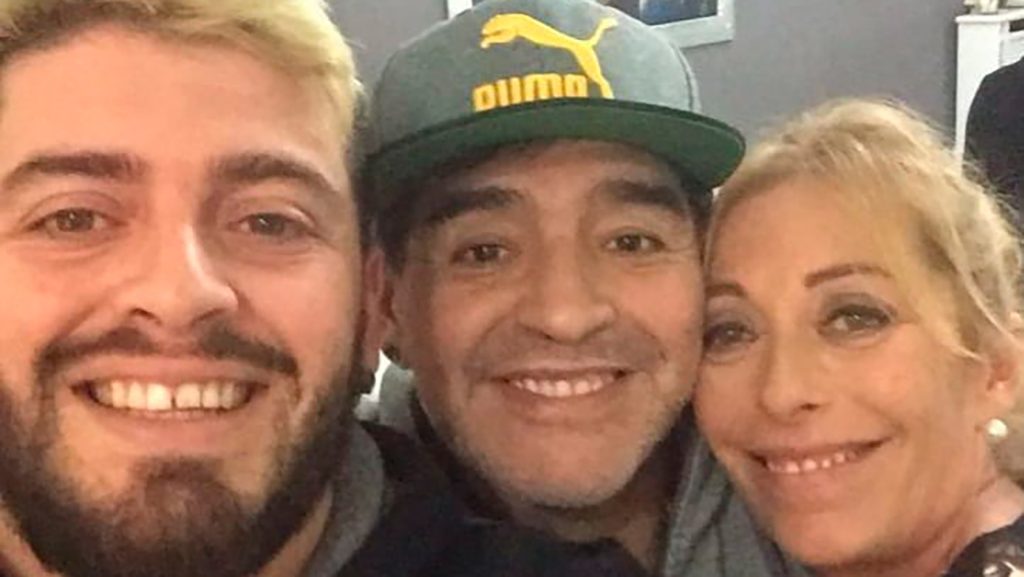
This became more relevant when, as a result of this infidelity, Diego had a son with Cristina. The boy in question is named Diego Sinagra…and is the same age as his half-sister, Dalma. Maradona recognized him as his son after 29 years and several trials.
Gianina, His Second Daughter
Barely a year and a half had passed since Dalma’s arrival in the world when Maradona announced that he would have his second daughter with Claudia. Although Diego’s affair with Cristina Sinagra had been a media scandal, it seemed that Claudia had forgiven her husband.
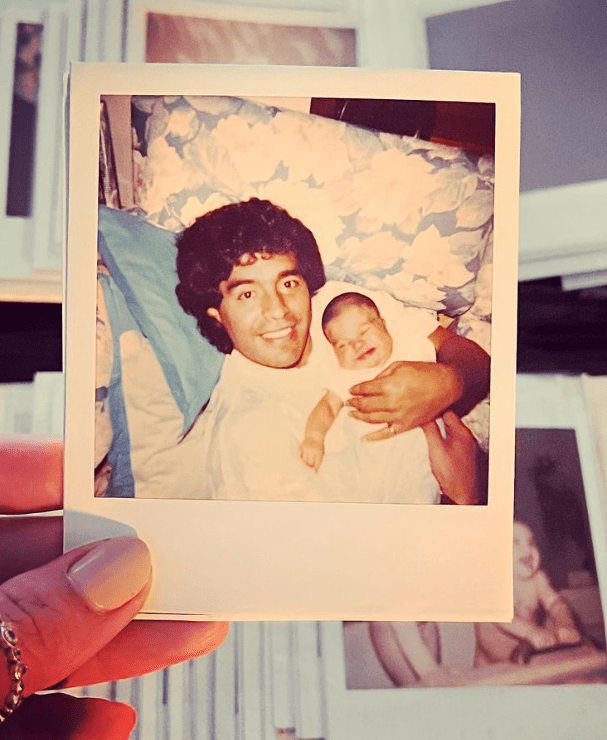
Gianina Maradona was born in 1989. She was the second, and last, daughter Diego had with Claudia. This time around, Claudia was the one who chose the name. By choosing an Italian name, the pair showed that they were really happy about living in Italy.
Italy, 1990
The 1990 World Cup was played in Italy, and the Argentine team was once again the favorite to win it. Maradona was already a fairly mature player and was going through an unbeatable moment in his career. All eyes were on him.
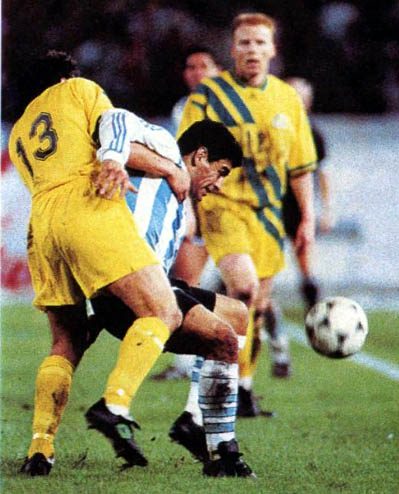
Much to Diego’s, and his followers’, disappointment, the Argentine captain was not quite physically fit. He had suffered an ankle injury, which occurred during the championship. Although Maradona did his best to play through it, it was clear that something was wrong.
Runners-Up In The World Cup
Despite this, Argentina played an impeccable World Cup. They arrived as clear favorites in the final, which, once again, they had to play again against Germany. The game was very close, but Germany came out on top. The Germans scored a single goal, which was enough for them to take home the trophy.
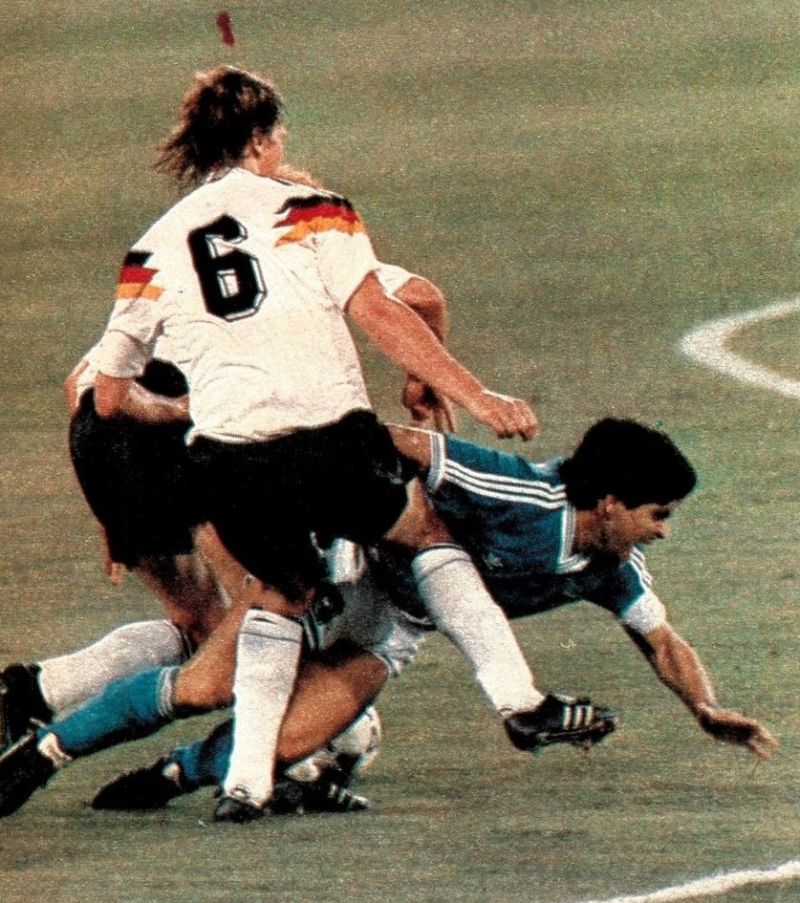
This was a great disappointment for Diego, who was even seen crying at the end of the match. The great effort of the blue-and-white team was not enough for them to win their third World Cup. It was undoubtedly a bitter competition for the Argentine team.
The Beginning Of The End
After the 1990 World Cup in Italy, Maradona went back to Napoli to play his seventh season with the Italian team. What most people didn’t know was that it would also be his last. Even though the team won the Supercopa in Italy, Diego was facing some serious problems backstage.
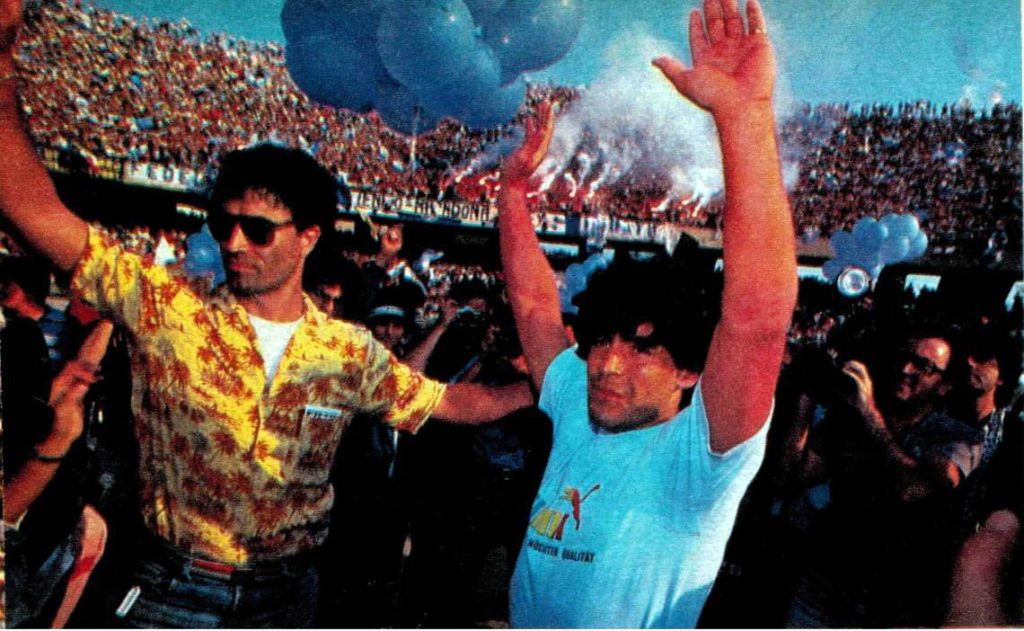
Toward the end of the season, Maradona got suspended from playing for 15 months. The reason behind that was the fact that he had tested positive in an anti-doping test for a certain illicit substance. Ever since his arrival in Europe, Diego hadn’t changed his ways.
Diego Goes Back Home
After he got suspended, Maradona made the decision to move back to Argentina. This was a dark period for Diego, given that he had been prohibited from playing anywhere in the world, for any team. At first, he lived in Buenos Aires, where he planned to stay for a sabbatical year.
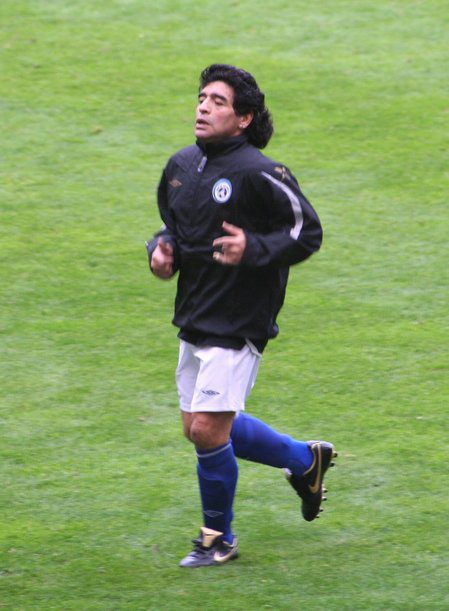
However, things were not that easy. Apparently, most of the bad habits he acquired in Europe followed him to Argentina. Because of that, Diego had plenty of trouble with the Argentine justice system. Among other things, the police had to raid his home, and Diego paid a bunch of fines.
His Move To Spain
In 1992, Diego’s temporary ban was lifted, and he was allowed to play soccer again. Even though most people expected him to return to Napoli, the star decided that he didn’t want to go back to Italy; he wanted to have new experiences elsewhere.
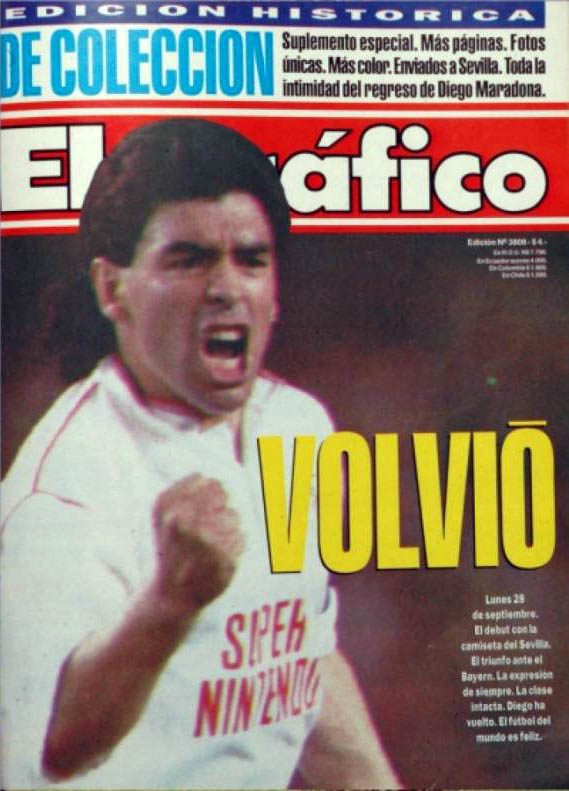
This decision disappointed many of his Italian fans, but Diego had his eyes set on Spanish soccer. He decided to play for Sevilla, and he arrived at the team in October 1992. It didn’t take long for him to become one of the best players in the Spanish league.
Back To The Argentine League
In ’93, Maradona returned to Argentina. There were plans for him to return to Argentinos Juniors, which had been the club that had put him on the map. Although that was expected, negotiations fell, and, in an unexpected turn, Diego ended up signing with Newell’s Old Boys.
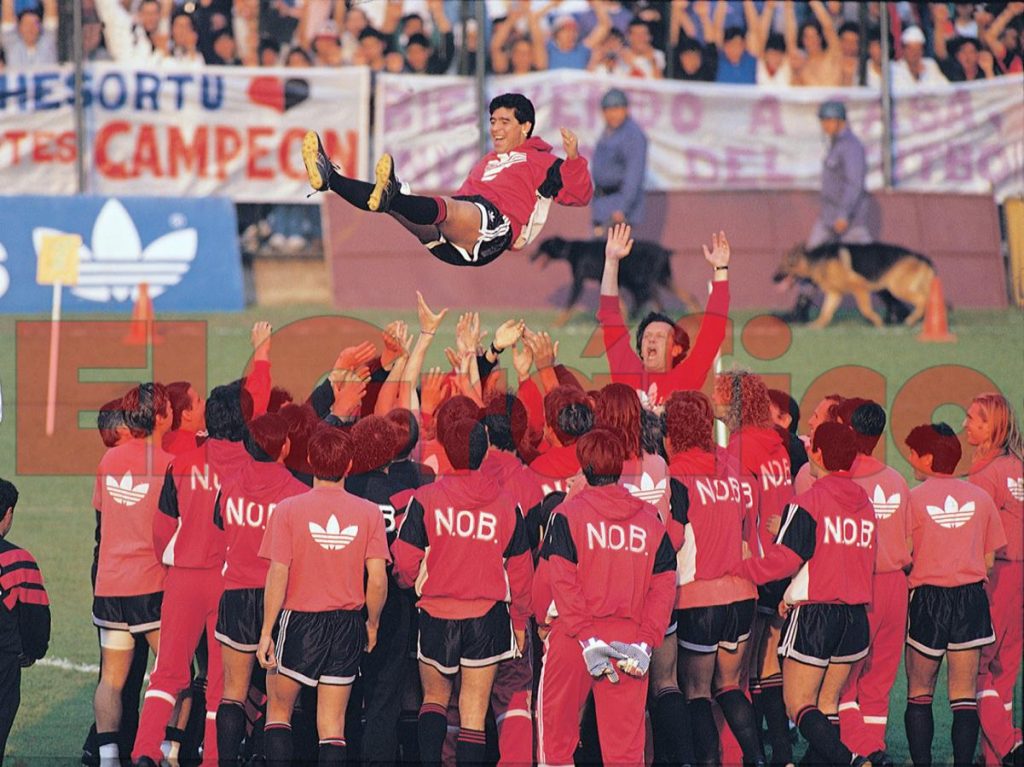
Despite all the problems that the Argentine star had until this moment, there were many clubs that battled over his contract. At the end of the day, most of these clubs were unable to get the superstar to play for them.
The Idol Of The Masses
When he first arrived to train with Newell’s Old Boys, there were 40,000 people were waiting for Diego on the field. In October ’93, Diego made his formal return to Argentine football by playing a friendly match wearing the team’s red and black jersey.
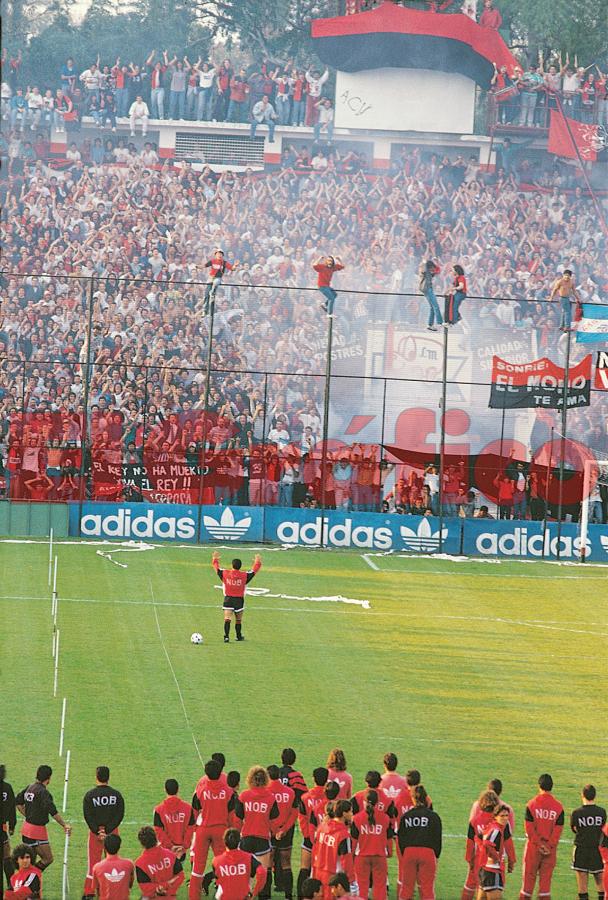
It didn’t take long for the problems to start once more. Coach Jorge Solari was very accommodating to Maradona, but when he was fired, the technical direction fell into the hands of Jorge Castelli. Castelli was less amicable to Diego, and the friction between the two was detrimental.
He Almost Doesn’t Make It To The World Cup
By 1993, Maradona was already preparing to play the following year’s World Cup. However, in a painful episode, a group of journalists went to look for him at his home in Buenos Aires… things didn’t end well for the journalists and Diego.
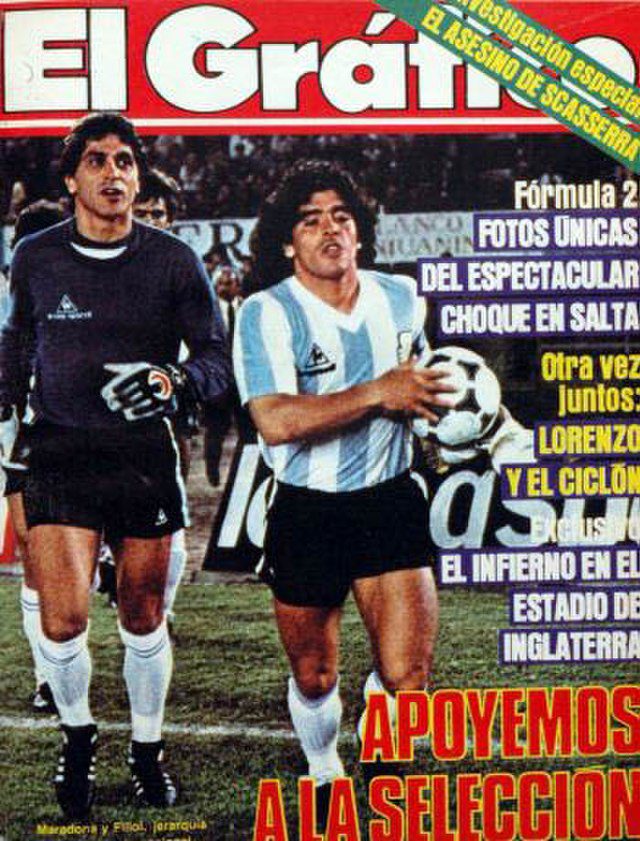
After a heated confrontation between the player and journalists, Diego was blamed for the incident and forced to pay for the damage he caused. Because of this episode, Maradona did not participate in the ’93 Copa America, nor in some playoff games for the World Cup.
A Second Chance
The truth was that things were not going well in the Argentine national team without Maradona. The blue-and-white team had a hard time making it to the ’94 World Cup. More and more people were asking Diego to return to represent his country.
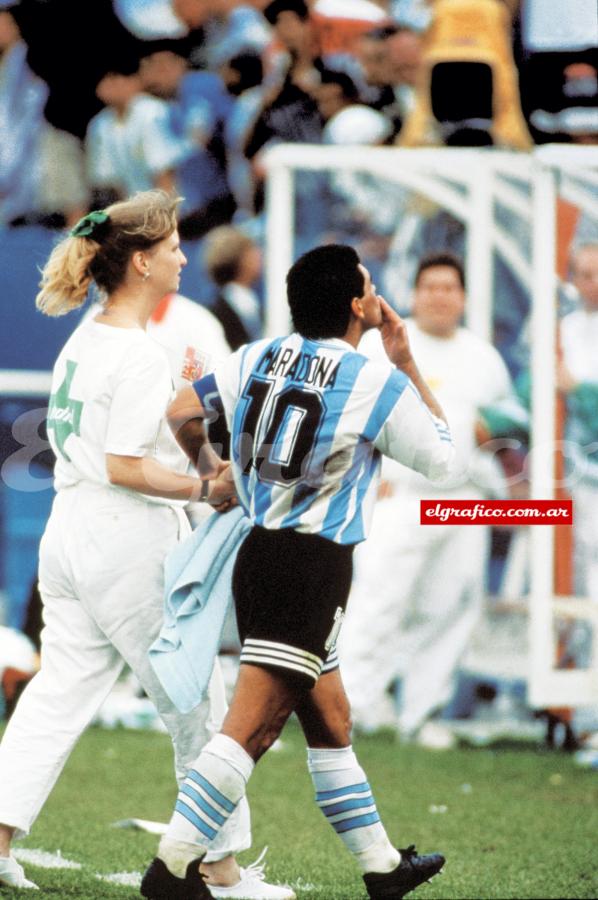
Finally, the pressure from the Argentine people triumphed, and Maradona was allowed to return to the national team. The change was evident as it was much easier for the team to qualify for the World Cup with their captain back.
Diego Leaves The Competition Early
The ’94 World Cup in the United States was the fourth World Cup Maradona played in. Argentina was, once again, the favorite to win the tournament, since it was one of the strongest teams. This was clear when they defeated the Greek team by four goals.
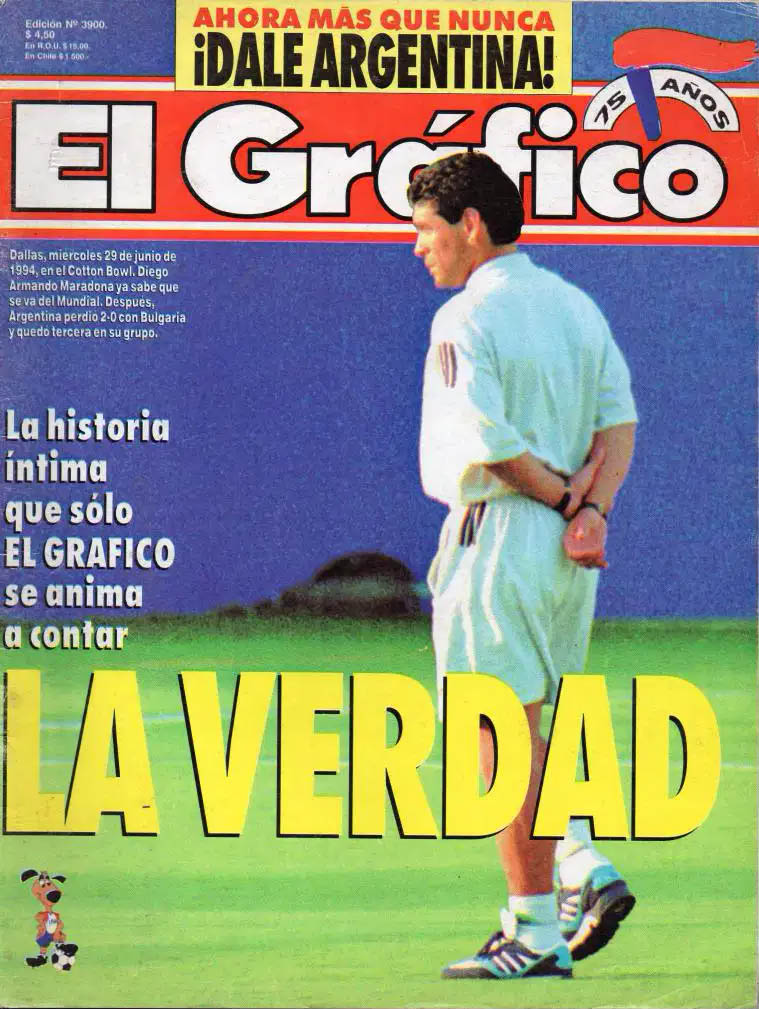
However, this great start was cut short. After playing only one game, Maradona again received a sanction for the use of illegal substances. In his defense, Diego alleged that he had taken medicine that had been prescribed for the flu.
What Really Happened?
In 1999, the Anti-Doping Agency released a report about the sanction against Maradona. Although he had to comply with the sanction imposed, the world later found out that the agency hadn’t actually found illegal substances in his blood, just as he had declared before.
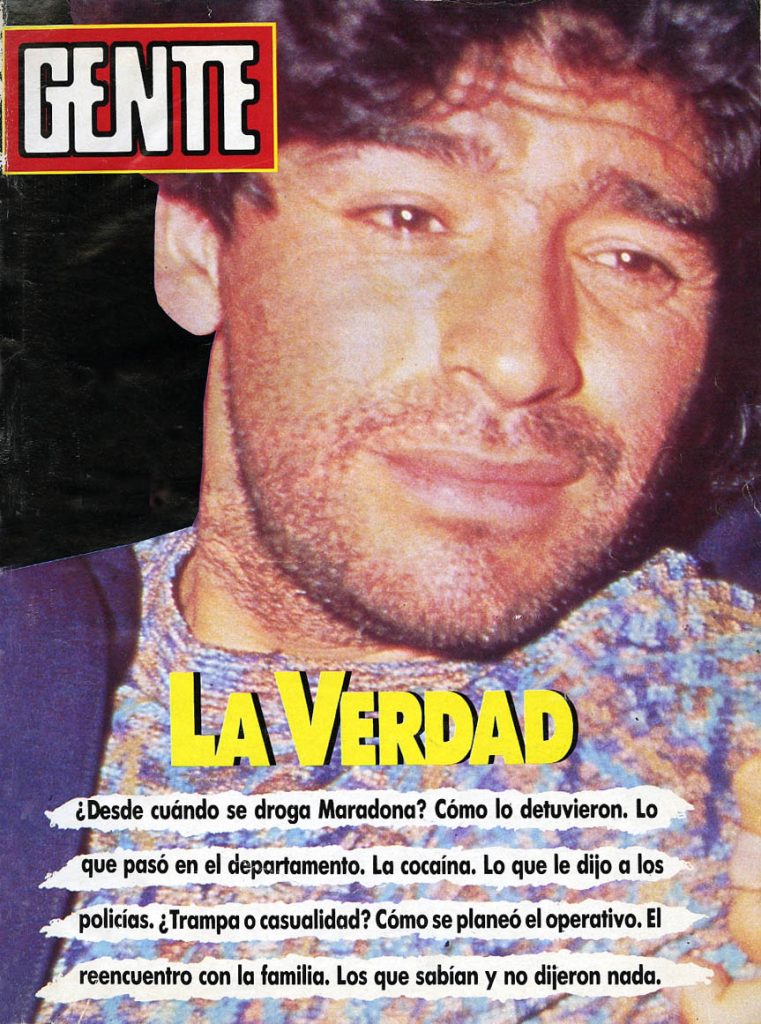
The anti-doping test had been positive at the time due to the concentration of chemicals in the medicine that Maradona had taken. On this particular occasion, the Argentine golden boy was unjustly punished. The Argentine team left the World Cup after only making it to the second round.
Maradona, The Technical Director
Again, Diego could not return to playing soccer until 1995, but this sanction did not prevent him from being a technical director. In an unexpected twist, Maradona looked for opportunities to manage a team as soon as he returned from the World Cup in the United States.
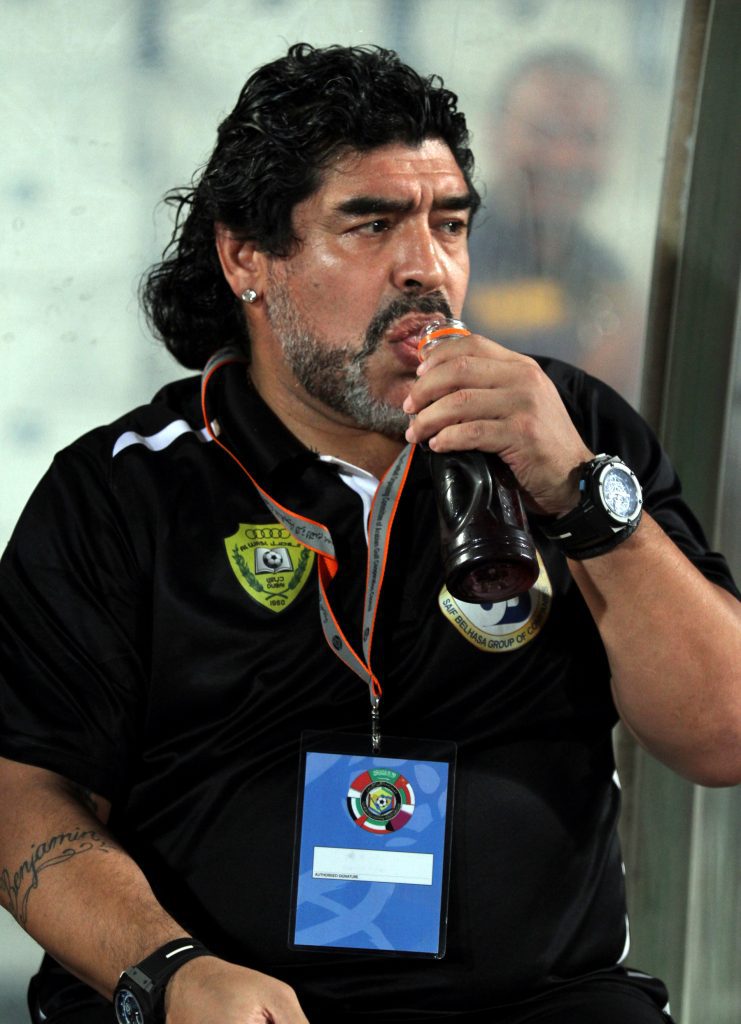
During a strange period in which he was still a non-retired player, Maradona was appointed technical director of Club Mandiyú. This first experience on the bench lasted only a couple of months, as Diego faced several problems trying to manage the squad.
Return To Boca Juniors
The whole world knew that Diego Maradona was a huge fan of his former team, Boca Juniors. Therefore, Maradona was able to achieve his dream of wearing the Xeneize jacket once again and returning to the club he loved at the La Bombonera Stadium.
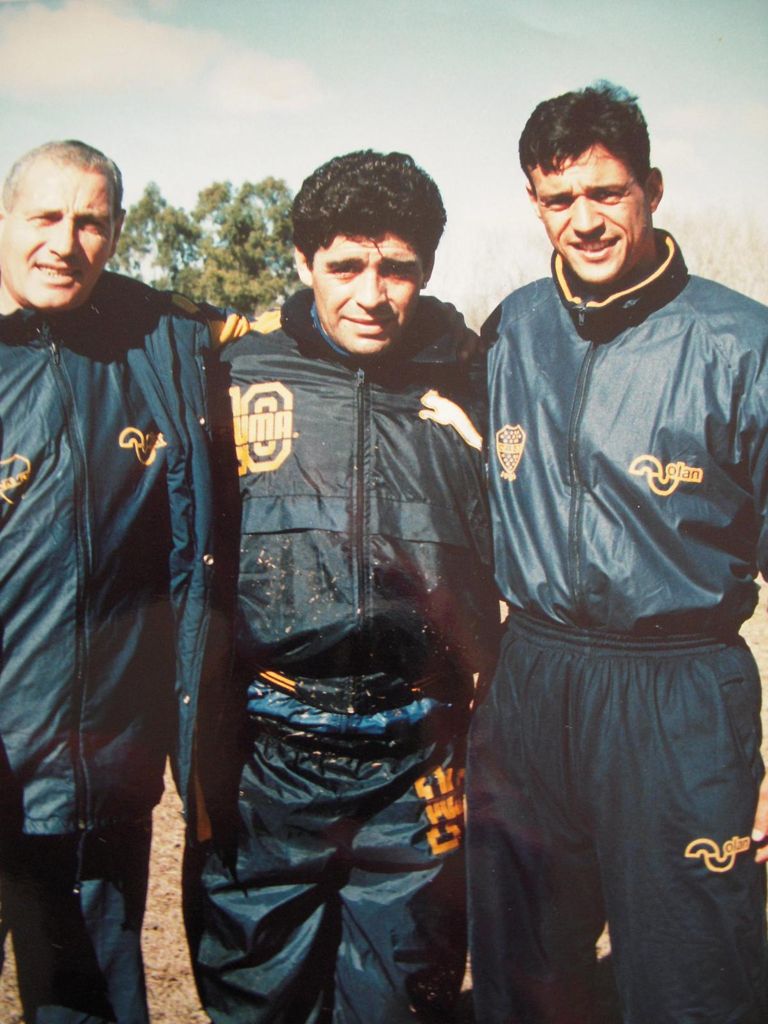
At first, everything went well for Diego. He was the undisputed idol of the fans and started his participation in Boca with good results. However, the arrival of Carlos Bilardo did not go down well with Maradona as he had beef with him from his time at Sevilla.
Diego’s Health Worsens
Unfortunately, Diego began to face the first of his many health problems in early 1997. During a television interview, the soccer superstar felt sick due to low blood pressure. He had to be rushed to the hospital for treatment immediately.
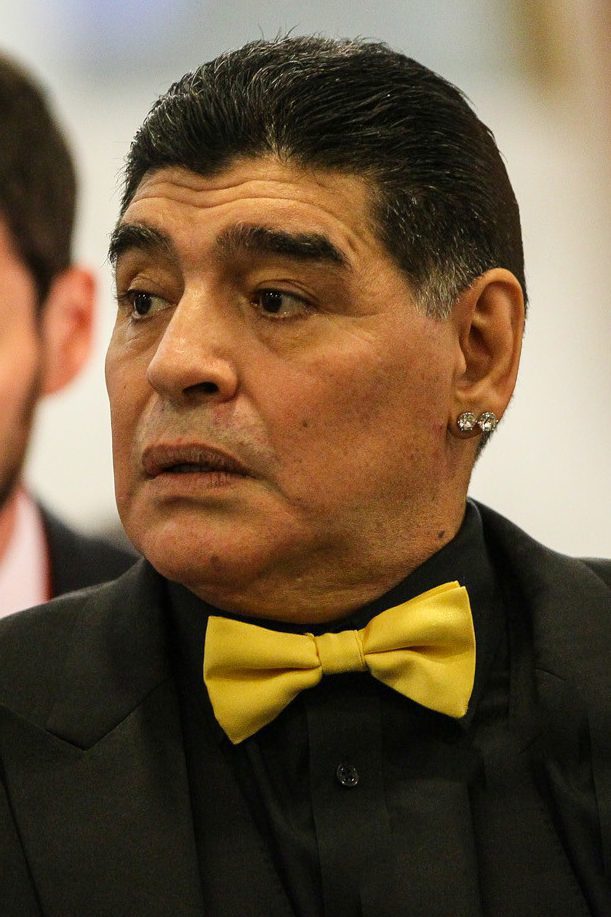
He had to receive treatment in Santiago de Chile, but this was only the first of many episodes that began to happen more frequently. Little by little, the athlete was getting worse on the field, and he had to stop playing altogether.
His Family Troubles
Diego’s health was not the only bad thing going on in his life at the time. His family situation deteriorated in 1998, which affected many aspects of his life. Maradona began to worsen his lifestyle, and he made several bad decisions.
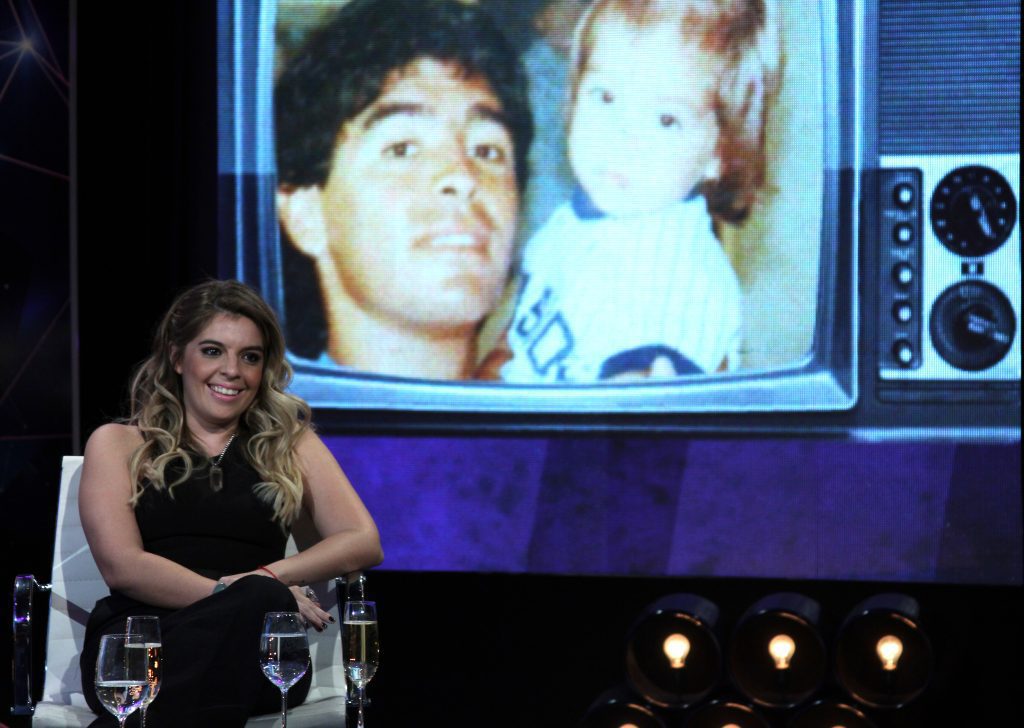
In the second half of the ’90s, Claudia learned that her husband had been unfaithful to her on several occasions. In one of these affairs, Diego had even fathered his second child born out of wedlock. This made the relationship between the two go from bad to worse.
Saying Goodbye To The Field
In ’97, Maradona announced that he would soon leave the fields permanently — 1998 marked his official retirement from soccer. After his retirement, Diego tried to lead a quieter life and stay away from the scandals that followed him throughout his career.
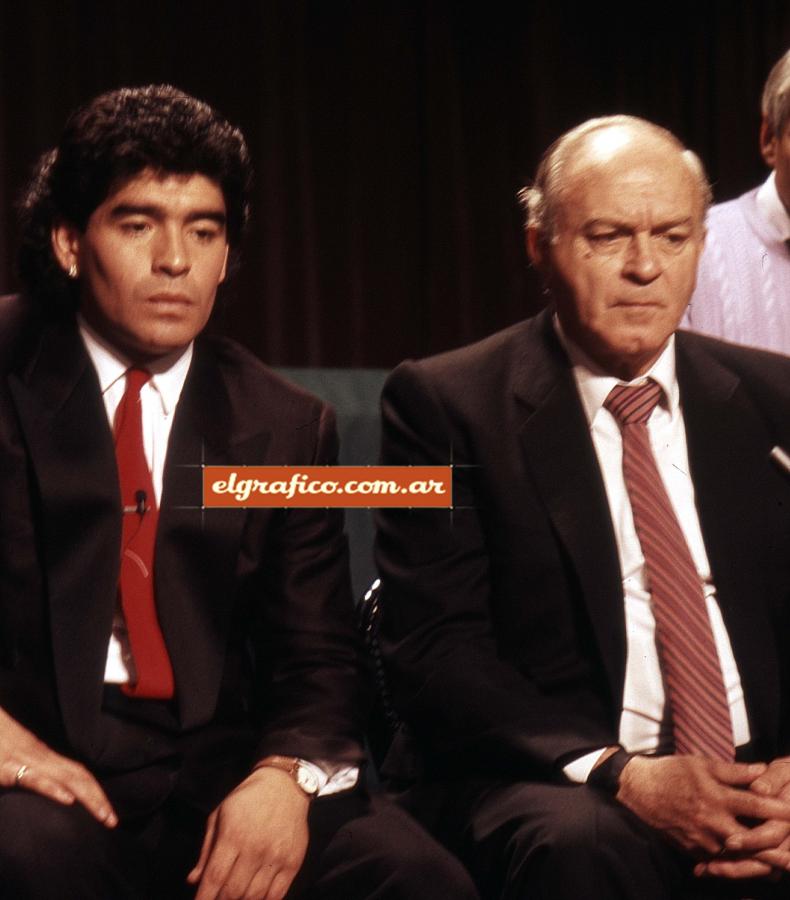
There were many rumors about teams that offered Maradona to postpone his retirement for a few years. The reality is that he was already tired and no longer physically fit to continue playing professionally. Finally, Diego officially retired from the sport.
Diego During His Retirement
Although Diego wasn’t competing on the soccer field, the rest of his life was dedicated to various activities related to the sport. In the first months after retiring, he dabbled in different things, such as working as a commentator during matches or doing commercials for sports products.
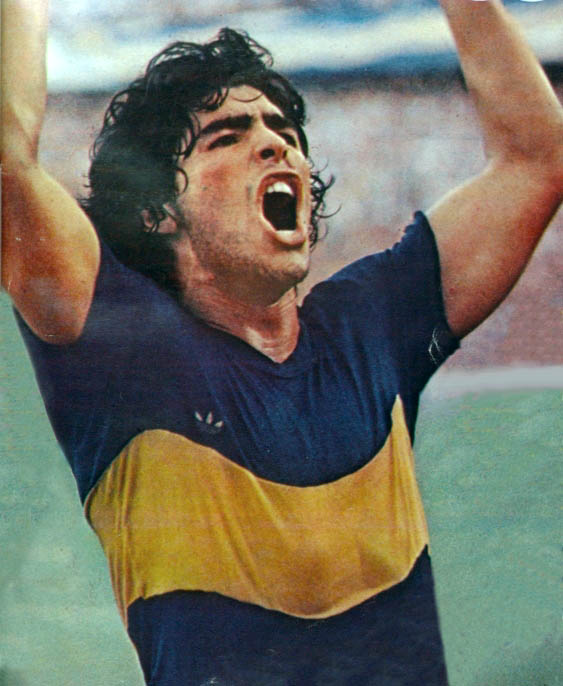
Among his most important occupations in retirement was during the period in which he was the vice president of Boca Juniors. However, he did not last long in any of these positions. The choices he had during made his youth took their toll on him when he was older.
His Health Problems Pile Up
In 2000, he had one of the most delicate episodes in terms of his health. While enjoying a vacation in Uruguay, Maradona had to be hospitalized due to high blood pressure. At the time, his representative claimed that this episode had nothing to do with his drug abuse.
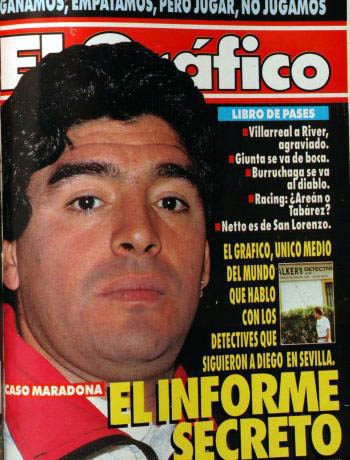
At the beginning of the century, Maradona was unrecognizable. He had gained a lot of weight, which led to further health complications. That year, he was hospitalized in Cuba. He spent some years in the country recovering from the medical “episode.”
Diego And Claudia Get Divorced
Another dark period for Maradona occurred in 2003, when his wife, Claudia Villafañe, asked for a divorce. Up to that point, they had had a lot of marital problems — Diego’s infidelities, which happened constantly throughout their union, had taken their toll on the relationship. He had even fathered several other children with his many lovers.
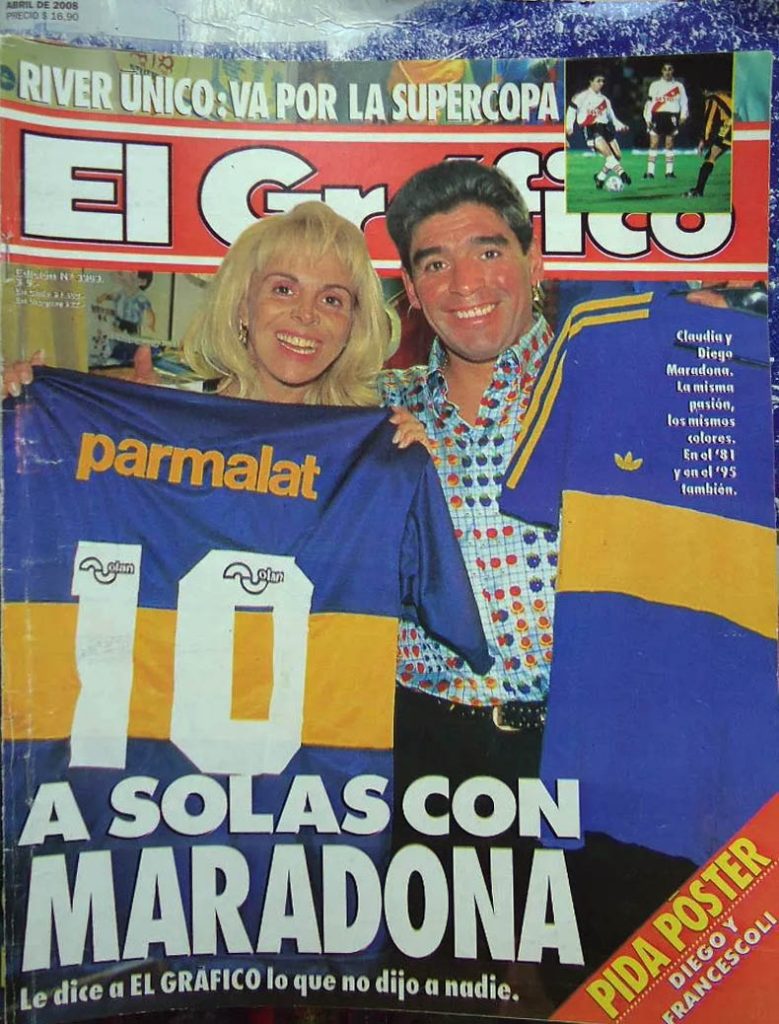
That same year, their divorce was finalized. As expected, the press made a point to turn the episode into a circus. The media followed the divorced pair everywhere they went and published pieces about their divorce, including a lot of fake news, on a daily basis.
His Time As Vice President Of Boca Juniors
As we mentioned before, Diego temporarily took on the role of vice president of his former team, Boca Juniors, after his athletic retirement. While the whole ordeal was controversial, many people still believe that he had a positive time during his tenure.
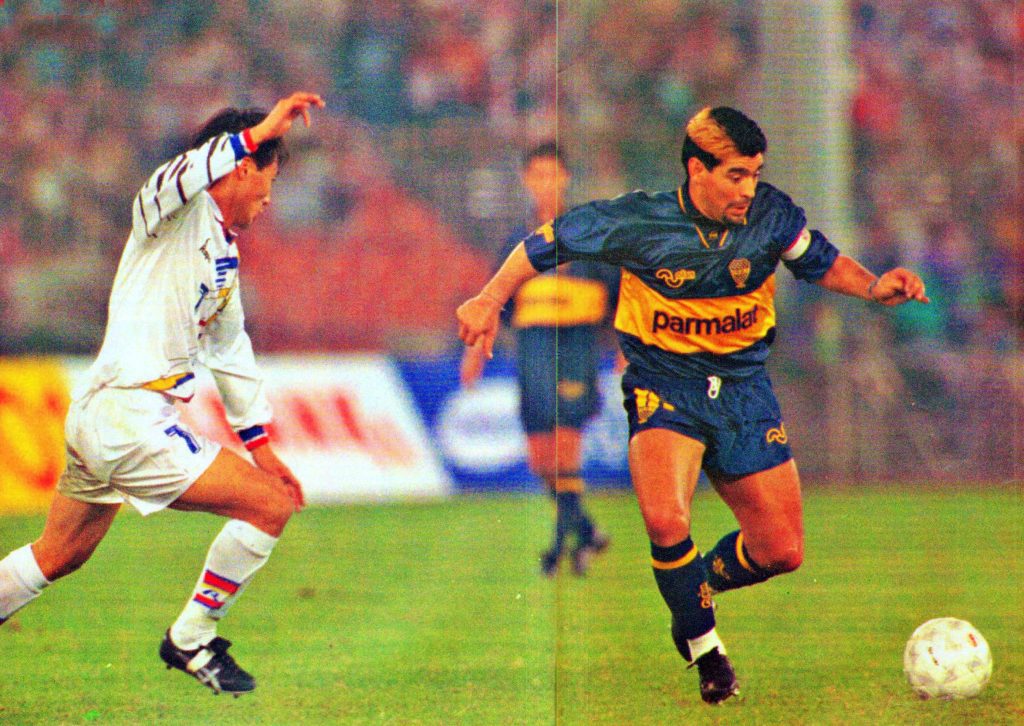
Among his achievements is the fact that he managed to sign Afio Basile to become the team’s head coach. Together, the duo managed to help the team win multiple championships in South America. At the same time, Maradona was seen playing charity games to help the poor.
Diego Is Back In The Hospital
In 2007, Maradona had to be admitted again to a hospital. His health reached a very delicate point as he suffered from acute hepatitis. For almost two weeks he was under medical treatment, during which time his life was at risk.
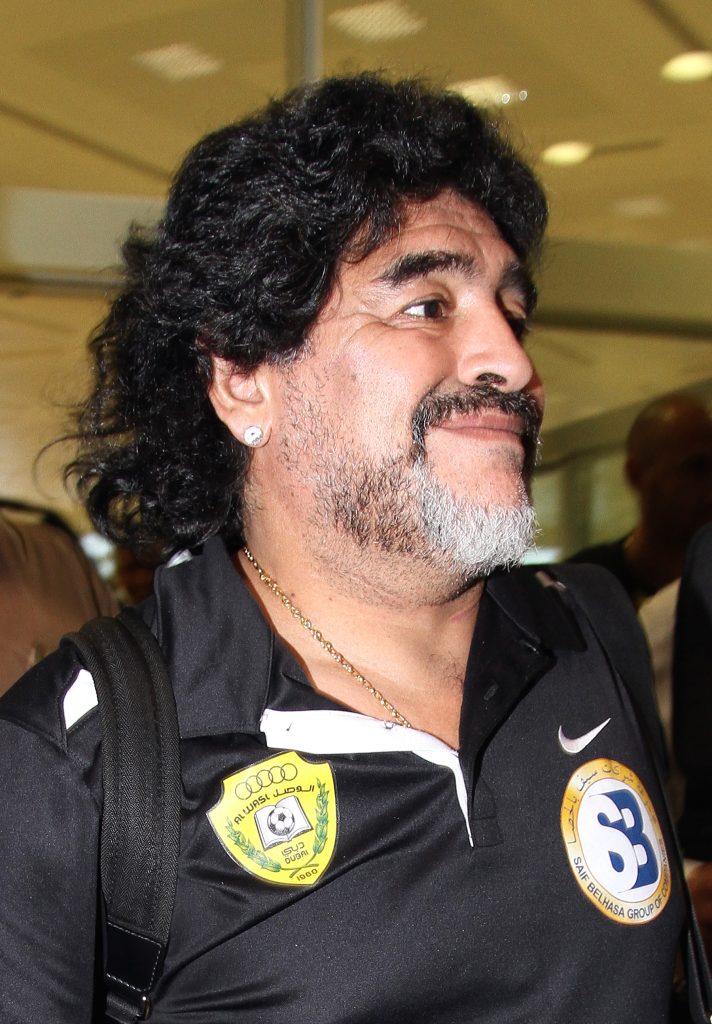
At the time, it became clear that Maradona hadn’t let go of his old ways. He stopped using illicit substances, but he was drinking alcohol excessively. On top of that, he had an awful diet that helped deteriorate his health.
Working For The National Team
Qualifying for the 2010 World Cup in South Africa was especially difficult for Argentina. In 2008, coach Alfio Basile resigned as technical director, which led Maradona to manage the blue-and-white team. After a complicated classification, the last playoff game was against Uruguay.
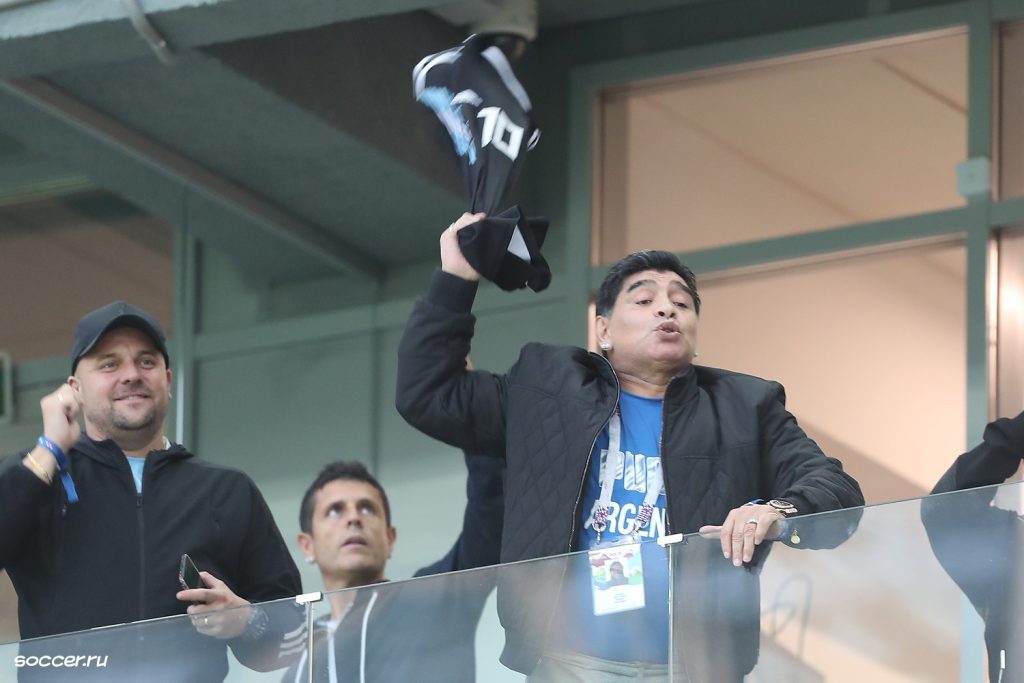
Finally, Argentina was able to qualify for the World Cup without having to play an extra round. Rumor has it that Diego was essential for the team to pull this off. In addition to being a great strategist, he knew how to keep the players motivated and in check, given that they truly respected him.
South Africa, 2010
The 2010 World Cup had finally arrived. The blue-and-white team already had Lionel Messi, whom people expected to repeat Maradona’s feats from when he was younger. The team managed to qualify for the next phase without any trouble; they were hopeful.
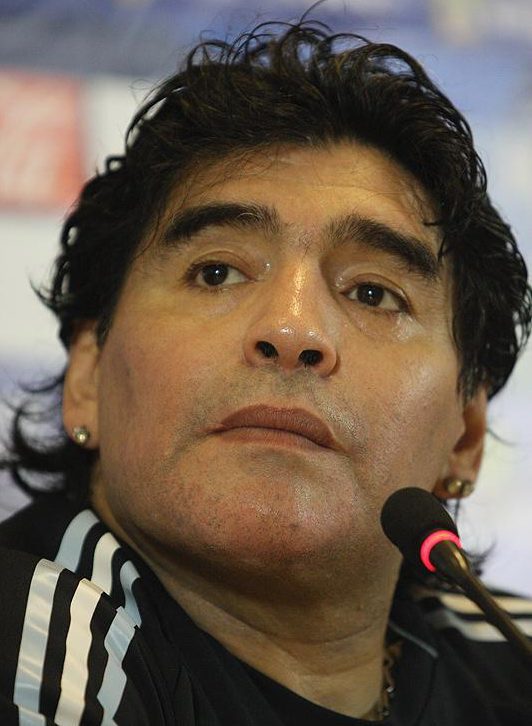
In the second round, Argentina faced Mexico. They won the match without much effort. By then, there was already a lot of talk about how the team was one of the favorites to take the coveted trophy back to Buenos Aires.
The Match Against Germany
The Argentine team had to play against Germany in the quarterfinals, who had been having a great campaign during the competition. Maradona already had an important record against the European team, whom he had faced in two World Cup finals. In that round, it was the most anticipated match.

Nobody could’ve expected the Argentine team’s embarrassing performance. From the get-go, the German team was superior and took advantage of every opportunity they had. In the end, Germany scored four goals and sent the Argentine team back home empty-handed and with a lot of shame.
After The World Cup
The original idea was for Diego to remain in his position as technical director of the national team. It’s worth mentioning that he had to pick up the pieces after Alfio Basile left the team in 2008, but it was too late for him to change much. Diego declined the offer to continue with the team.
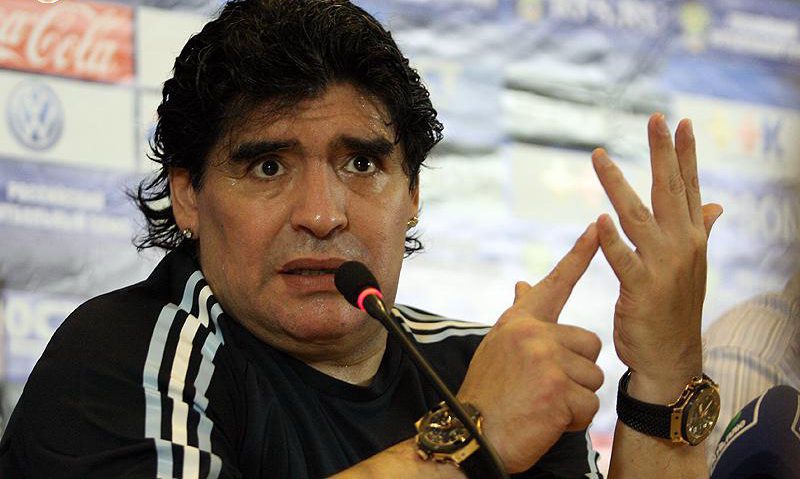
It seemed like Maradona was not happy with some of his contract clauses, which is why he declined the offer. This was the last time he worked with the national team, but not the last time he managed a team. And still, his health problems continued piling up.
His Problems Overshadowed His Talent
Diego Armando Maradona was one of the best footballers and sportsmen in history. For many, he became an inspiration to future generations of players. In Argentina, he was a national hero who was much revered. His fans basically saw him as a god.
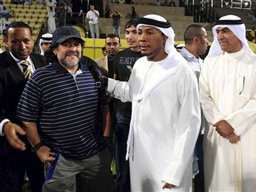
As talented as he was, Maradona never truly reached his full potential. At one point in his later life, Diego himself admitted that abusing different substances had been his worst mistake in life. Given that he was such a big star, we hope this message reached the youth who admired him.
Maradona’s Last Goodbye
Sadly, the Pibe de Oro passed away on November 25, 2020. He died at his home in Buenos Aires shortly after undergoing an important surgery after a stroke. The news of his passing shocked the world, but his home country was particularly dismayed.
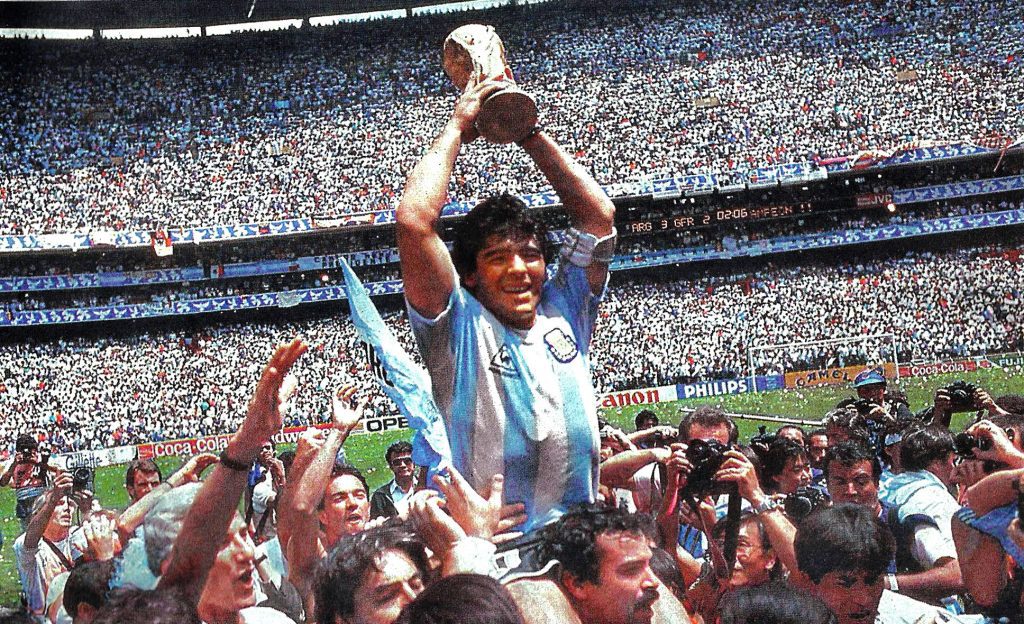
At the time of his death, Diego Armando Maradona’s health was really delicate. After years, his many health problems took their toll on him. The cause of his death was a cardiorespiratory arrest. The sports world mourned his loss and his many fans and friends offered their condolences to his family.
